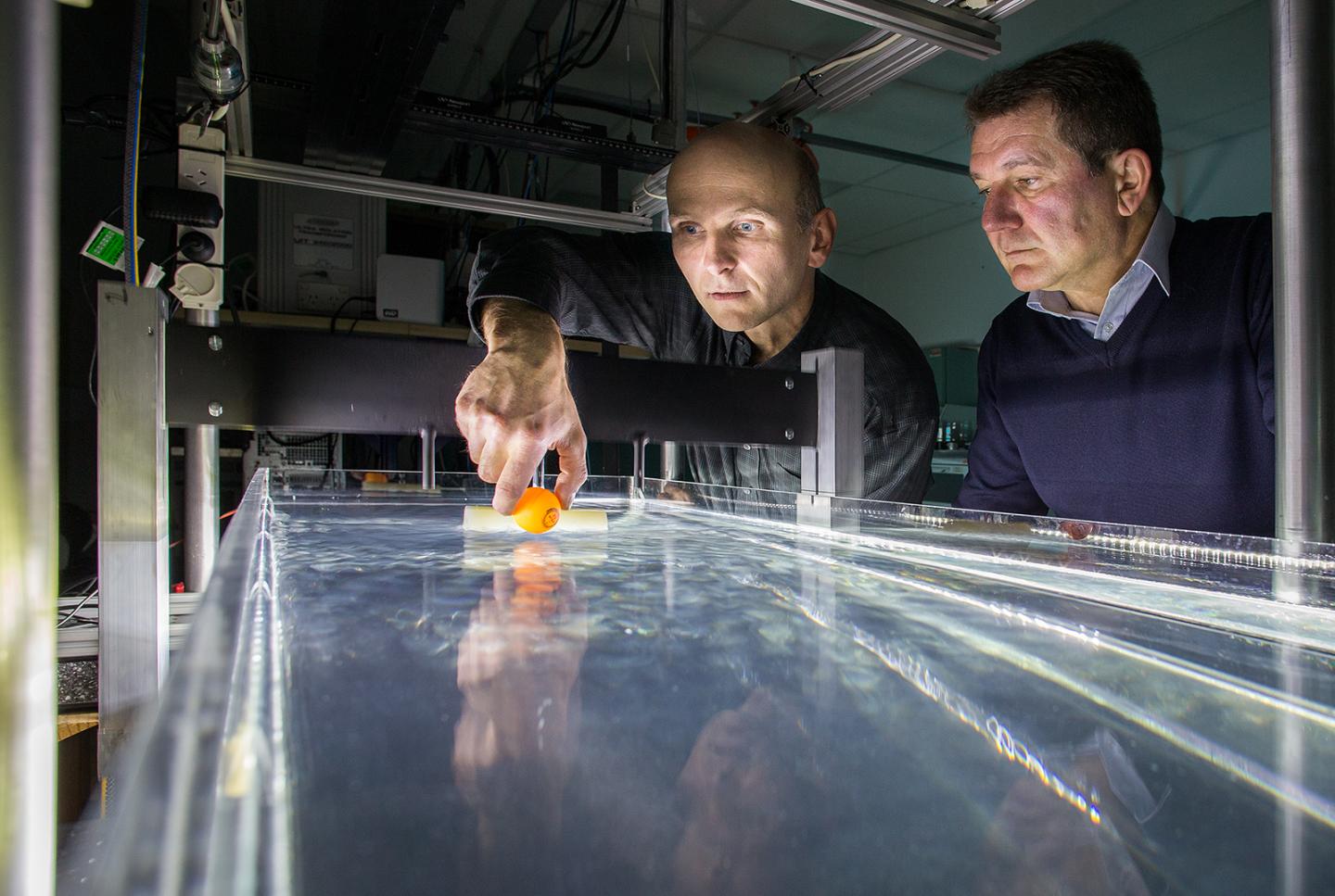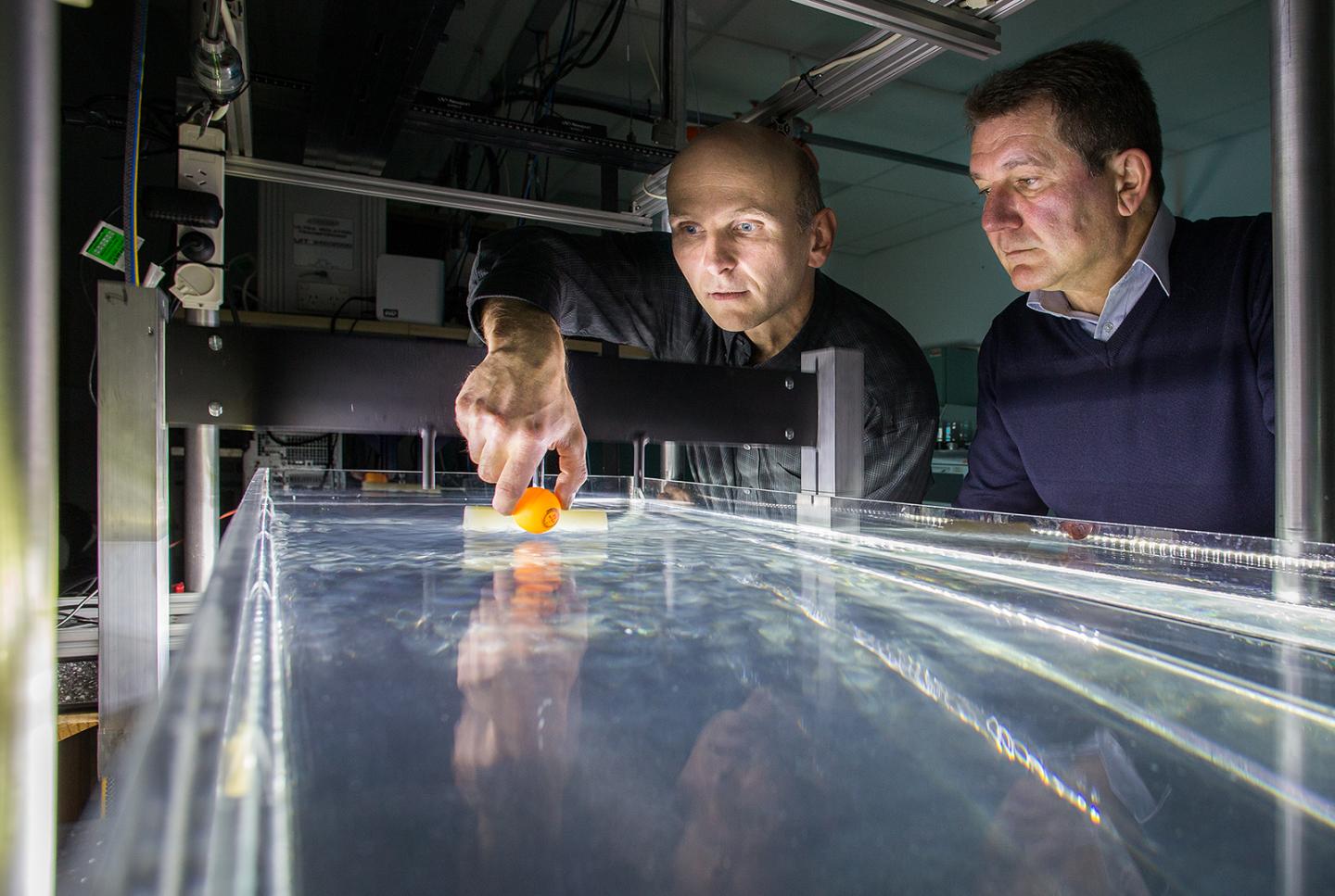
Credit: Stuart Hay, ANU
Scientists at The Australian National University (ANU) have controlled wave-generated currents to make previously unimaginable liquid materials for new technological innovations, including techniques to manipulate micro-organisms.
The new kind of dynamic material could be revolutionary, similar to other materials created in recent decades that have been used for invisibility cloaking, superlenses and high-efficiency antennae.
Research group leader Professor Michael Shats from ANU said the currents made a liquid behave like materials with regular structures such as crystals.
"It's an incredibly powerful new tool that will work at the surface of almost any liquid," said Professor Shats from the ANU Research School of Physics and Engineering.
"By changing waves, we can change the flow patterns. This allows us to remote-control the nature of the material."
The flow patterns can be changed at will, so the liquid-based materials are more dynamic and flexible than solid materials.
"These flow patterns are effectively two-dimensional materials at the interface between the liquid and the gas above it," Professor Shats said.
The research is published in Nature Communications.
Lead author Dr Nicolas Francois from the ANU Research School of Physics and Engineering said each current was like a Lego brick.
"Now we have created the brick, people will be able to make complex structures we cannot imagine now," he said.
"If you use conducting liquids you can create an interface with designed electrical properties. Or with biocompatible substances you can guide micro-organisms or trap them."
The team observed the flow patterns in a tank of water by generating a wave pattern with two oscillators and tracking fluid particles. They also modelled the flow with computer simulations and theoretical calculations.
###
Dr Hua Xia and Dr Horst Punzmann from the ANU Research School of Physics and Engineering also contributed to the research.
FOR INTERVIEW:
Professor Michael Shats
ANU Research School of Physics and Engineering
T: +61 2 6125 0038
M: +61 405 146 173
E: [email protected]
Dr Nicolas Francois
ANU Research School of Physics and Engineering
T: +61 2 6125 7588
M: +61 419 121 399
E: [email protected]
For media assistance, contact Will Wright from the ANU Media Team on +61 2 6125 7979, +61 478 337 740 or [email protected]
Media Contact
Professor Michael Shats
[email protected]
61-405-146-173
@ANUmedia
http://www.anu.edu.au/media
############
Story Source: Materials provided by Scienmag





